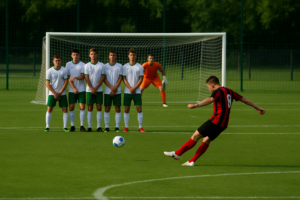
Football is a sport that requires skill and strategy, which are introduced and perfected on the training pitch. An important part of training is the equipment that helps players take their game to the highest level. After all, Cristiano Ronaldo would not have become one of the best players of all time without the right training equipment.
The training equipment used not only simulates real game situations in which you learn to react, perform complicated movements and control your emotions, but also helps to reduce the risk of injury. Safety is paramount when training so that you are fit to rock the pitch in your games.
Effective training requires modern equipment that encourages and motivates players to go the extra mile and achieve that extra 10% in training sessions.
Let’s take a look at some of the fundamental training equipment used in football.
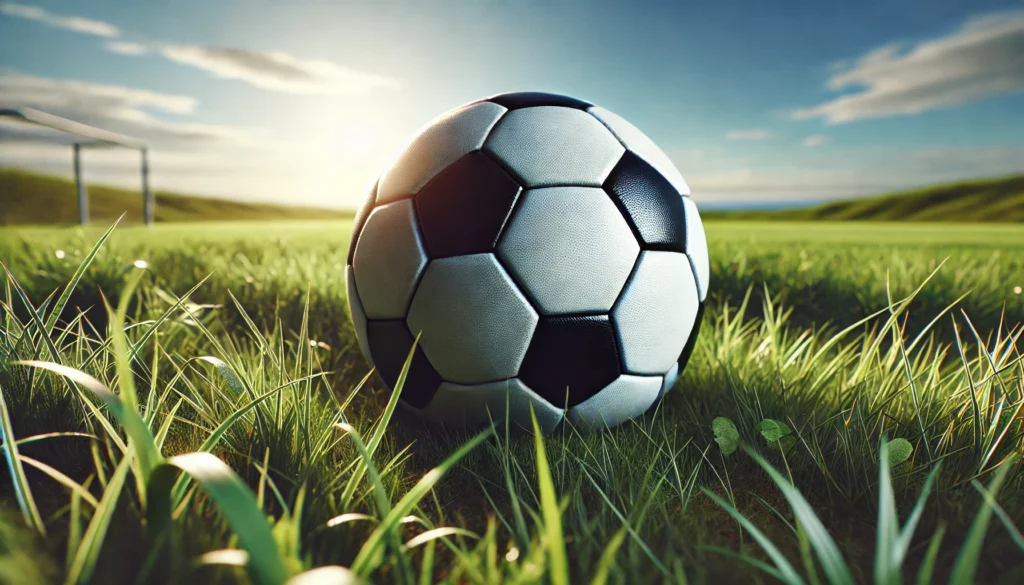
Without balls, there would be no football, and balls are used in almost all areas of training.
This is obvious, but there is nothing more important. Balls are needed for almost every exercise. Balls come in different sizes, with size 5 being the standard size for adults. These balls are used for passing, dribbling, shooting and heading. The type of ball can have a big impact on the player and their skills. The weight and responsiveness of the ball are crucial for the development of ball feeling and technique. An example of this is the infamous Jabulani ball, which was used at the 2010 World Cup. The Jabulani consists of eight spherical plates designed to improve aerodynamics. Diego Forlan reached his personal peak with this ball. With normal balls in club competitions, he could not achieve the same impact power, which emphasises the importance of the ball in football.
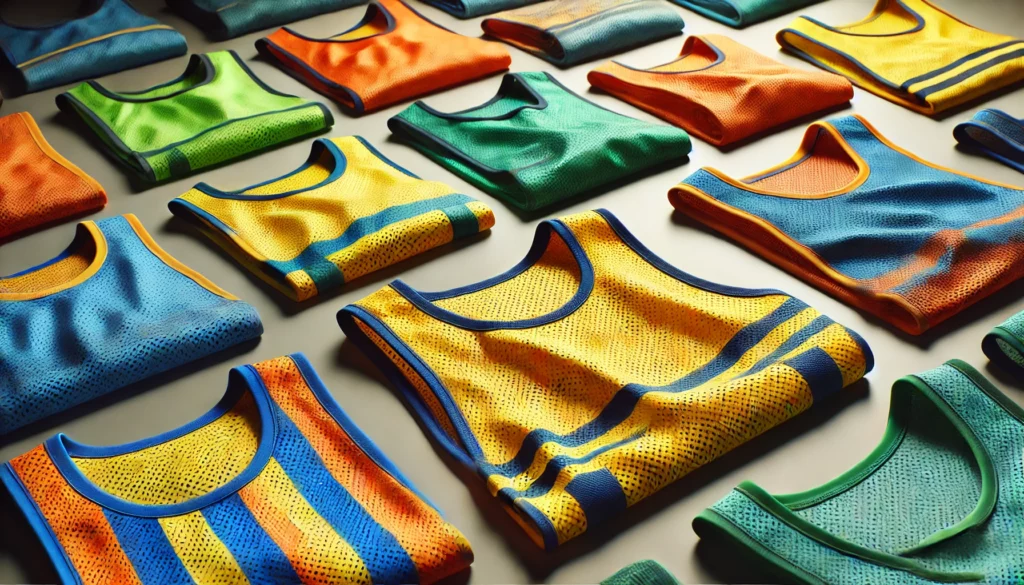
Training bibs are used to distinguish different teams during training.
Training bibs are something you remember as a child at school and never forget wearing. However, real football fans remember training vests because Mario Balotelli had trouble putting them on during his time at Manchester City. These colourful waistcoats are worn over normal training gear during warm-ups or general training. Coaches or trainers use them to divide players into teams for small or regular matches.
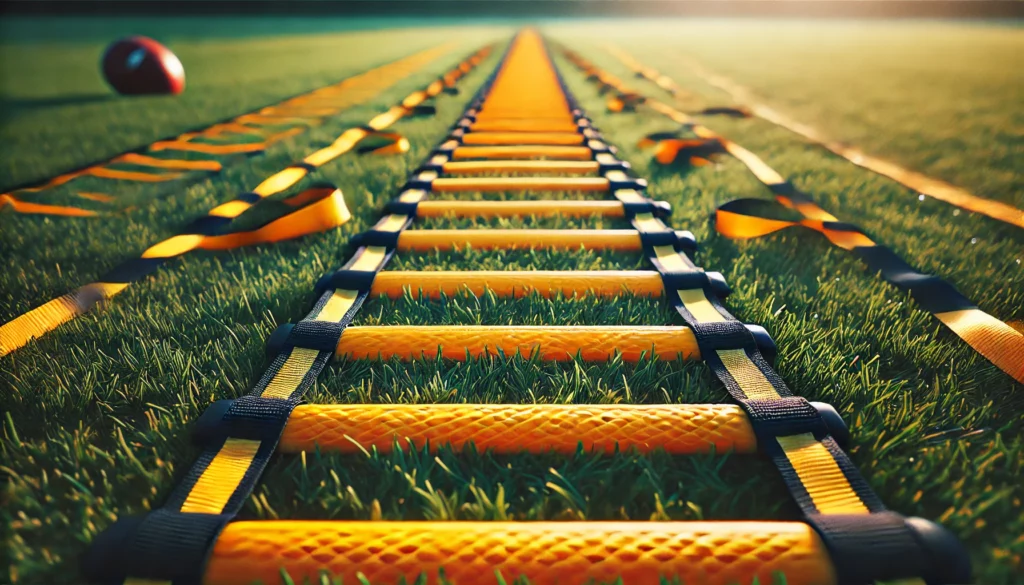
Coordination ladders are used to improve leg speed, coordination and agility.
Especially at the youth level, coaches emphasise the use of these ladders and hurdles to give players a solid foundation for the future. The ladders can be used for footwork drills, short sprints and general agility drills. The ladders and hurdles are set up on the grass and the players have to perform certain patterns and movements. They help to train fast foot movements and quick changes of direction. To take the use of the ladders to the next level, ball control drills can be added as players make their way through the ladders.
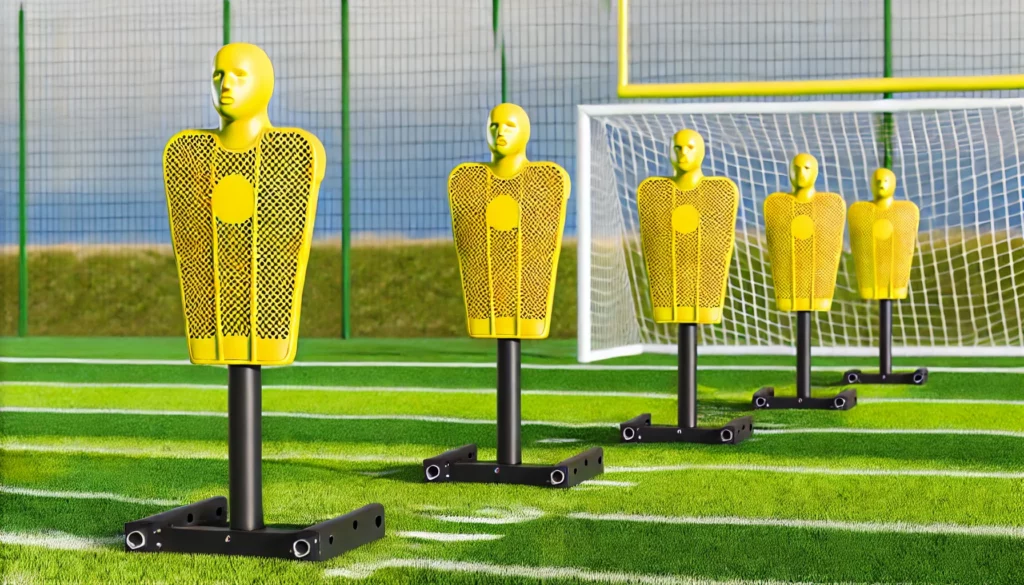
Training dummies act as defenders during free-kick and shooting drills .
The best free-kick takers of all time take their cue from the defenders when taking a free-kick. These defenders stand in front of them like a wall to make life difficult for the free-kick taker. These training dummies imitate an opponent's free-kick wall and allow players to practise their shots to be prepared for the big moments. Although these dummies do not jump, they are high enough to represent a defender as if they were jumping during the game.
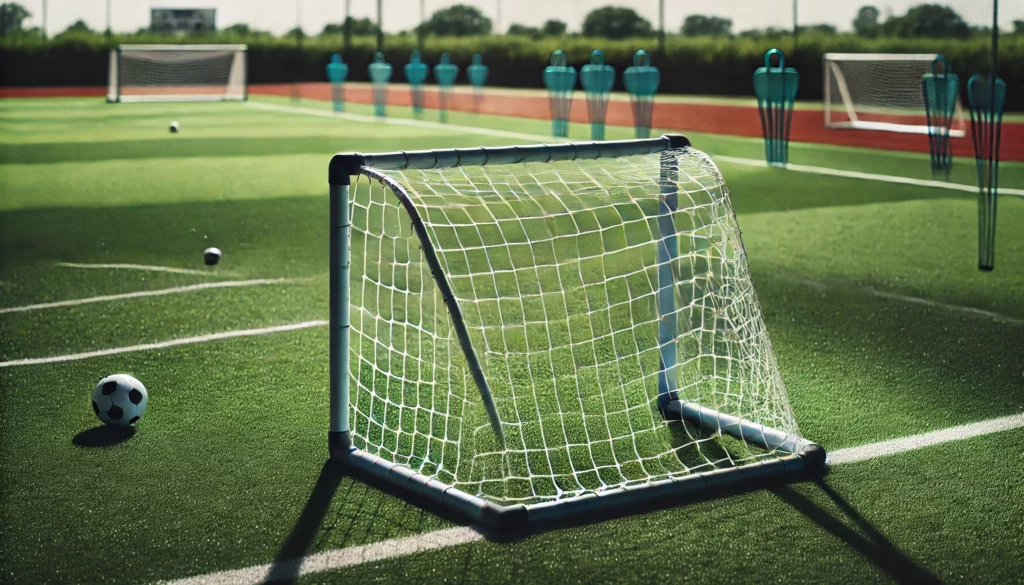
Training goals are smaller, portable replicas of traditional soccer goals that are used for shooting drills and small-sided games.
Sometimes the usual large goals are too easy to score on during training. To loosen up the game and challenge players to improve their build-up and passing game, it is important that the ball lands in the small goals that can be entered by the players. It looks simple, but it's a big challenge. These pop-up goals are easy to store, especially as they are available in different sizes depending on requirements. Whether they are used to improve a player's shooting ability or a team needs to hit these mini goals during passing drills , they add to a fun but challenging training session.
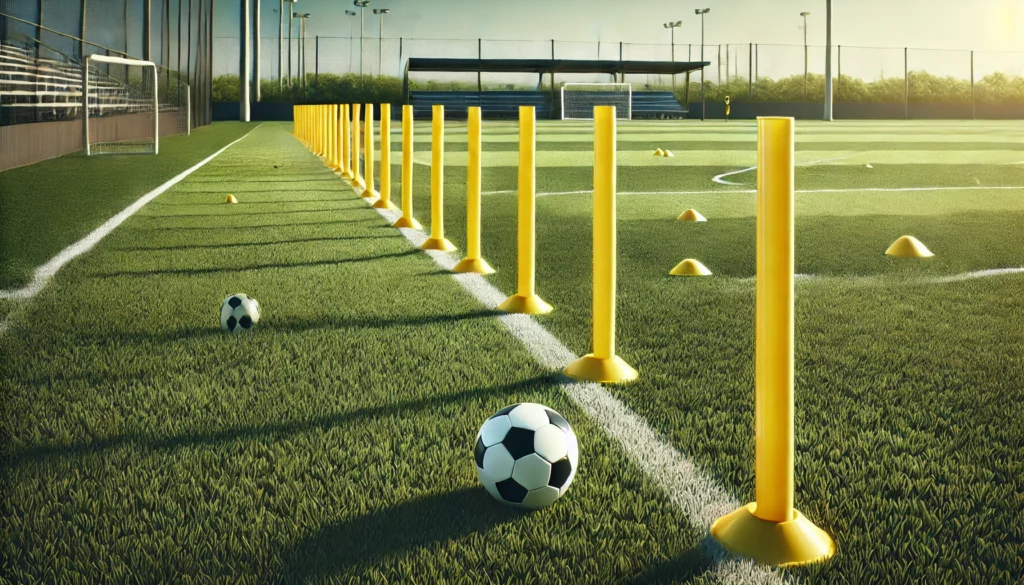
Slalom poles are used in drills to improve acceleration, deceleration and change of direction.
They are set up in rows or patterns through which the players move with or without the ball. This not only trains ball control, but also the ability to utilise tight spaces. Slalom poles are particularly suitable for training technique and speed and help to improve reaction time and pace of play, which can be a decisive advantage in match situations. There are also weighted poles for training indoors when the weather is bad or the training pitches need to be protected. The quick and explosive movements needed to outwit the opponent can be developed using these drills. They are ideal for training the mobility of the upper body.
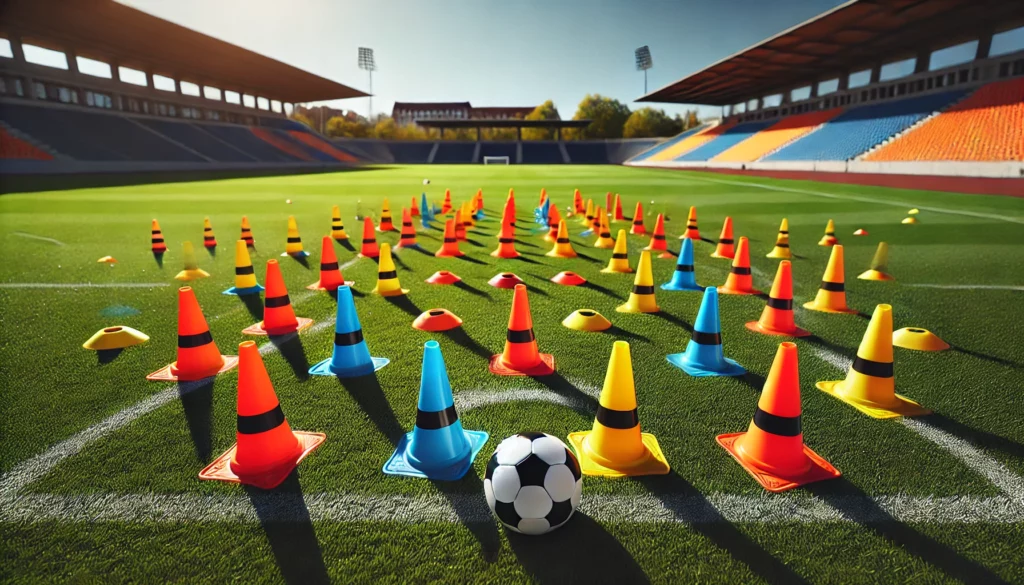
Cones and markers are useful tools for training sessions to improve dribbling, speed and agility.
This training tool is also reminiscent of childhood. Marker cones come in different shapes, sizes and even colours. Some are shaped like traffic cones, others are more traditional and made of flexible plastic. To set up an obstacle course, trainers place the cones in different patterns, e.g. in the form of grids or zigzag lines. To improve speed and footwork, the players move around the cones. Markers can also be used to demarcate certain areas of the pitch for training and to help players focus on accuracy and spatial awareness. The cones can be used with or without the ball or simply as goalposts.
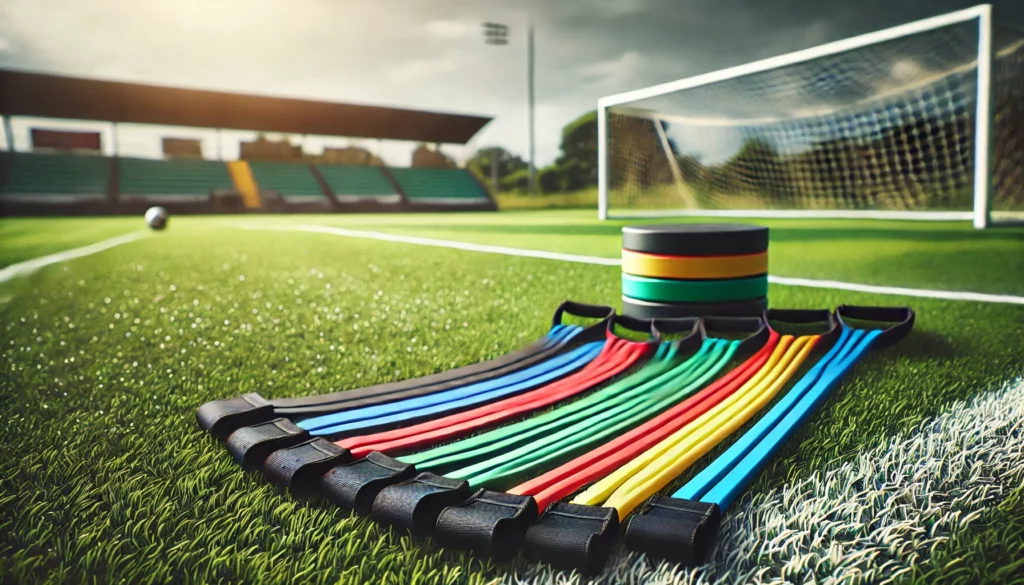
Resistance bands are a useful tool for improving agility and strength.
When you see an outfield player being outplayed by a stronger defender, or a defender effectively pushing off an attacker in a 1v1 duel or sprint, the use of resistance bands is often mentioned in training. Resistance bands are used to build strength and improve mobility. They are often used during strength training or warming up. To train the lower body, players can perform a range of exercises such as lunges, hip flexion and lateral walking with the band. Resistance bands can be used in training to improve balance, prevent injuries and improve performance on the pitch. Players also train their sprint speed and strength by working against the force of themselves, their coach or a teammate, depending on the type of training session. Resistance is created by holding on to the resistance band while the player is running at full speed. The runner is forced to run harder and faster when they release the resistance.
Using training equipment is all well and good. However, modern football requires that little something extra, and that can be the use of technology in football training. Modern technology offers an advantage when it comes to optimising the performance of traditional football training equipment such as coordination ladders, resistance bands and bars. In addition to these options, zone14 AI-powered video analysesthat provide insight into how training affects in-game performance. For example, zone14 can analyse matches after agility and strength training using the automated AI football camera to determine how well these physical improvements translate to real-life match scenarios and help teams refine their tactics and improve overall performance.
Football is a sport that requires a combination of physical skills, mental agility and tactical awareness. The right training equipment is crucial to developing these attributes and allows players to improve their skills, build strength and reduce the risk of injury. Whether it's co-ordination ladders for quick footwork, resistance bands for strength training or free-kick dummies for practice, each piece of equipment plays an important role in preparing players for match day.
But physical training alone is no longer enough. By integrating advanced technologies, such as zone14's AI-based Video Analysis , teams can make the most of their training equipment and gain deeper insights into their performance. By combining traditional tools with cutting-edge technology, players and coaches can refine their strategies and ensure that every drill and practice leads to real success on the pitch.
Football is evolving and those who effectively combine physical training and modern technology will take their game to the highest level.
